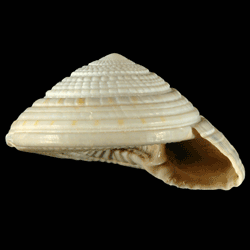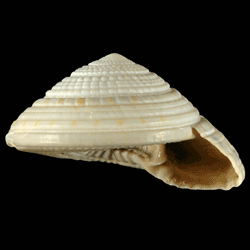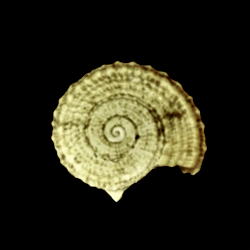
Architectonicidae

- Phylum: Mollusca
- Class: Gastropoda
- Order: Heterobranchia [Unassigned]
- Family: Architectonicidae
Overview
Common name: Staircase shells or sundials
Key morphological features: The Architectonicidae have deeply umbilicate, low spired, disc or cone-shaped shells. They have heterostrophic protoconchs, and the shell exterior can be smooth or may have ornamentation such as smooth or beaded spiral cords and striae. The umbilicus also often features sculpture. The aperture shape is ovoid, but the lip is angular rather than rounded in some species, and the labrum is orthocline. Many species also exhibit at least one channel in the columellar lip. Source: Davies, A.M. 1971. Tertiary Faunas Vol. 1, second edition. New York: American Elsevier Publishing Company, Inc. 571 pp.; Tunnell Jr., J.W., Andrews, J., Barrera, N.C., Moretzsohn, F. 2010. Encyclopedia of Texas Seashells. College Station: Texas A&M University Press. 512 pp.
Geological range: Cretaceous to Recent (Davies, 1971).
Geographic distribution: A distributional map for modern Architectonicidae may be accessed from OBIS. A distributional map for ancient Architectonicidae may be accessed from the Paleobiology Database.
Diversity: There are 121 recognized living species of Architectonicidae and 12 genera (WoRMS database, unvetted). The Paleobiology Database recognizes 20 fossil genera and 285 fossil species of Architectonicidae (unvetted).
Paleoecology: The Architectonicidae are carnivorous, semi-infaunal gastropods, often burrowing into soft sediments during the day and emerging at night to feed. Some species are commensalists with cnidarians such as sea anemones and soft corals. Species of Architectonicidae can be found in subtidal, warm water habitats worldwide at a wide range of depths. Source: Tunnell et al. (2010); Solsona & Martinell (1996).
Phylogenetic status: Unknown.

